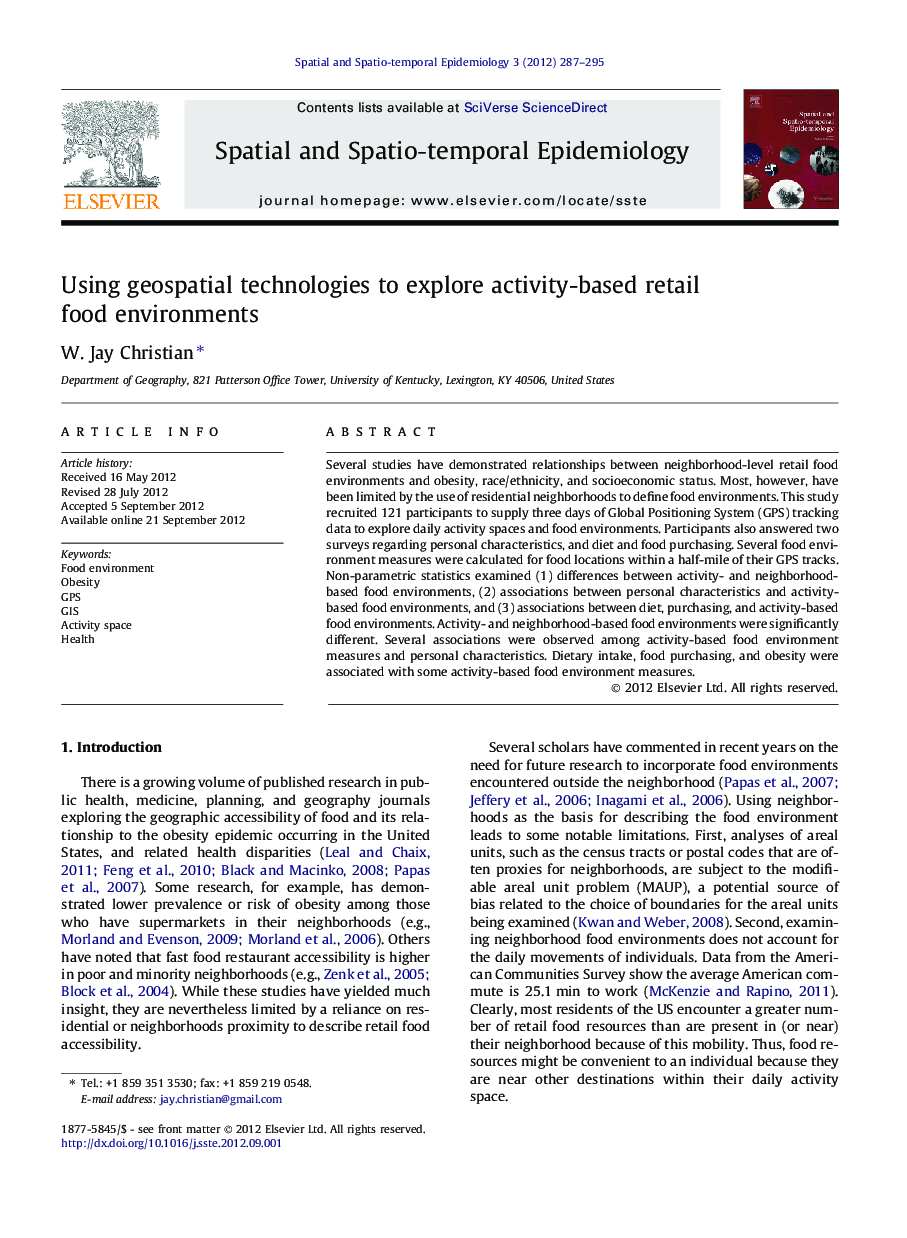| Article ID | Journal | Published Year | Pages | File Type |
|---|---|---|---|---|
| 1064392 | Spatial and Spatio-temporal Epidemiology | 2012 | 9 Pages |
Several studies have demonstrated relationships between neighborhood-level retail food environments and obesity, race/ethnicity, and socioeconomic status. Most, however, have been limited by the use of residential neighborhoods to define food environments. This study recruited 121 participants to supply three days of Global Positioning System (GPS) tracking data to explore daily activity spaces and food environments. Participants also answered two surveys regarding personal characteristics, and diet and food purchasing. Several food environment measures were calculated for food locations within a half-mile of their GPS tracks. Non-parametric statistics examined (1) differences between activity- and neighborhood-based food environments, (2) associations between personal characteristics and activity-based food environments, and (3) associations between diet, purchasing, and activity-based food environments. Activity- and neighborhood-based food environments were significantly different. Several associations were observed among activity-based food environment measures and personal characteristics. Dietary intake, food purchasing, and obesity were associated with some activity-based food environment measures.
► This study examined activity spaces and food environments using GPS tracking data and personal interviews. ► Participants’ activity-based food environments were substantially different than those of their neighborhood. ► Their activity-based food environments varied by demographic and socioeconomic factors. ► Obesity risk and dietary intake were associated with activity-based food environment measures.
